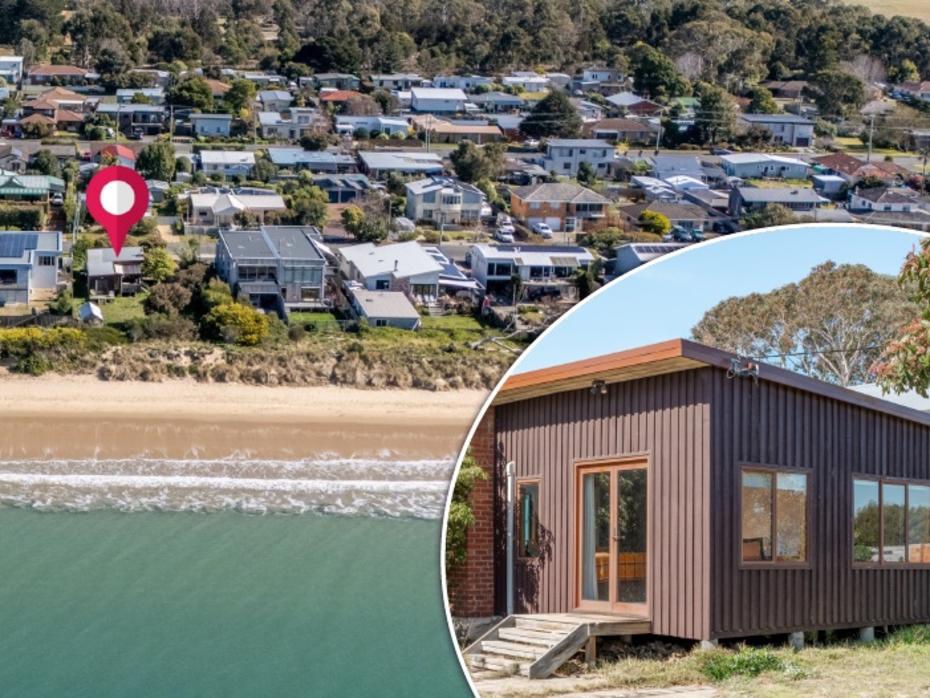The Buyer’s Handbook: The ABC of negative gearing: Experts reveal all

With more than 4,000 Google searches per month, understanding negative gearing is a key pain point for investors.
Alice Piper chats with Bryce Holdaway, Partner at Empower Wealth, and Carmel Jarvis, Home Loan Specialist at Westpac to break down everything you need to know about negative gearing, and whether it’s right for your investment strategy.
Guests:
Bryce Holdaway, Partner, Empower Wealth
Carmel Jarvis, Home Loan Specialist, Westpac
Transcript
Alice Piper: There is a lot of talk around negative gearing, so what is it and how does it work?
Today, I’m here with Westpac Home Loan Specialist Carmel Jarvis and Bryce Holdaway, investment advisor and partner at Empower Wealth. We’re here to break down negative gearing when it comes to investing in property in a very simple way.
Carmel first question, what exactly is negative gearing, and how does it work?
Carmel Jarvis: Well, Alice negative gearing is where the costs of an investment property like mortgage interest, maintenance and other expenses like insurance equal more than the rent that you’re earning from it.
So you’re actually making a loss each year, which means that you have to cover the shortfall out of your own pocket, and it’s not paying for itself. In Australia, you can use that loss to reduce the tax you pay on other income, like your salary and wages, which could mean a smaller tax bill.
AP: Okay, so Carmel, can you give me an example of this in numbers?
CJ: Yeah, absolutely. So let’s say you own an investment property. Each year, the total costs like mortgage interest, maintenance and insurance add up to $30,000 but you’re only making $20,000 a year in rent.
That means you have a $10,000 loss for the year with negative gearing. You can use that $10,000 loss to reduce your taxable income from your salary or other sources, which could mean that you could end up paying less tax overall.
AP: I just need to get this 100% clear in my head. Let’s say I earn $100,000 what is my taxable income and how much less tax do I then pay?
CJ: Okay, so here’s a simplified example, if you earn $100,000 and have a $10,000 loss from your investment property, that $10,000 gets subtracted from your income, so your taxable income drops to $90,000 the amount of tax you’ll pay will depend on your individual circumstances and in which bracket that places you.
But for example, if you’re taxed at 32.5 cents for each dollar over 45,000 then you’d end up saving around $3,250 in tax. That’s 32.5% of the $10,000 loss. So negative gearing can potentially reduce your taxable income and therefore your tax bill.
AP: Okay, so that all makes a lot of sense. Bryce, why should investors care about this?
Bryce Holdaway: Well, I tell investors all the time that native gearing is not a strategy. It’s just a tax outcome, because there’s two real benefits that you get from native gearing.
The first one is clearly the tax benefits, and you can actually help the tax man help you pay off the investment.
But the second thing is, and the reason that you do it in the first place is because you have this optimism about growth in the asset over time.
So eventually you go from getting a tax benefit to the rent rising, and then you positively contribute to the tax revenue. So it’s important to understand that negative gearing is just a moment in time, and the bigger picture that’s at play here is buying the right asset that will perform for your portfolio over time.
AP: Okay, so do negative gearing guidelines differ from state to state?
BH: Well, no, because tax is at a federal level, so it’s the same for everyone across all the states. But where it does differ is state based taxes, like land tax, and that’s where it is different. But for the majority of investors across this great country of ours, it is the same, irrespective of where you live.
AP: Okay, so Bryce, can negative gearing properties ever come back to actually bite an investor?
BH: Yeah, definitely. Because the whole idea is that you are buying something for a price that in some point in the future will go up in value, and if you buy the wrong property, this whole thing comes crashing down, because it’s one thing to get a tax benefit, but you’re not getting it all back, so you are still contributing money out of your pocket.
So it’s super important that you buy the right property. And if you don’t buy the right property, negative gearing is not something that you can get excited about, because there’s no point taking money out of your pocket if in the future the property doesn’t go up in value.
AP: Carmel, what about then from a lending point of view?
CJ: Yeah, there are some implications. So for example, if an investor has too many negatively geared properties, it could impact their ability to borrow money as they could potentially be seen as a higher risk.
What you want to be doing is crunching the numbers and really looking at the data from the start, our Westpac property research tool and calculators are a really good place to help determine the potential rental yield and what those repayments could be like.
AP: Bryce, what is your number one piece of advice when it comes to negative gearing?
BH: Well, negative gear is just one piece in the puzzle. There’s so much for you to consider making sure you buy the right property.
Is this the right thing for you? What is your risk profile? Are you at the right time in your life?
So I think it’s just a single piece in a bigger puzzle that we’re trying to play here. Usually the best place for me is to go and talk to your Lending Specialist. They can actually help you better understand your borrowing capacity and better understand where you can actually enter into the property market.
And doing that first is usually the best step that I advise anyone who wants to buy an investment
property.
AP: I think that’s great advice. And Carmel, what about from your end?
CJ: Yeah, I have to agree with Bryce, and I would add that it’s really important to Westpac that our customers are borrowing money in a safe way and buying properties that they can actually afford.
An investment property should be something that adds to your life, not takes away from it.
AP: Well, thank you, Carmel and Bryce, you’ve broken down the key elements of negative gearing in a very simple way and given our listeners some really valuable information.









